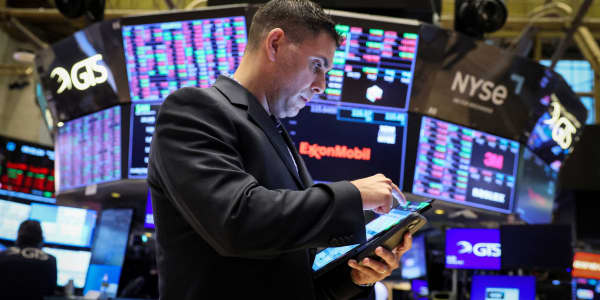For the past month, the stock market has been hard to impress, but also tough to rattle. The bright-side crowd is calling this "resilient," while the skeptics prefer "oblivious."
So which is it?
Probably a bit of both, as you might imagine.
Equities have walked a narrow lateral track since mid-December. On Dec. 13, exactly five weeks after Election Day, the closed at 2271. On Friday, it finished at 2274. During that time, the index has been contained in about a 2 percent range from high to low. And, of course, its senior colleague, the Dow Jones Industrial Average, has hovered just below the round-number, bragging-rights level of 20,000.
This, in many respects, is the way our passively owned, quantitatively steered market trades for weeks-long stretches now. After a sharp rally, all the eyeballs and algorithms deem the indexes a bit overbought, but figure any dip would be a good place to buy. So the dip is deferred?
Something quite similar happened from July into September of last year, after the neck-snapping post-Brexit rally got the market to a new high and then the indexes sat pretty still for more than six weeks.
Then, as now, traders and other worriers pointed to the "low" level of the CBOE S&P 500 Volatility Index, or VIX. Then, as now, the VIX had spent a good deal of time beneath the 12 level, near the bottom end of its long-term range.
One difference today, though, is that the VIX has been so docile as a polarizing, rule-breaking president prepares to assume office and seems bent on upending decades of normal governing procedures and recasting the tax and health care systems, while questioning some core tenets of postwar Western trade and security relationships.
That's why charts like this one are making the rounds, showing a quiescent VIX (the global version) conspicuously unmoved by a spike in a measure of economic-policy flux across the world:





